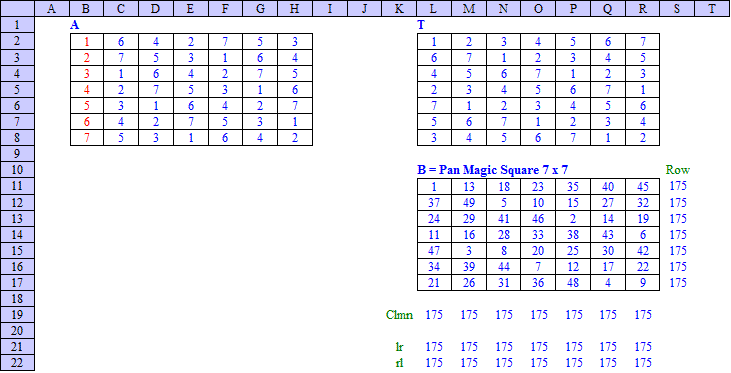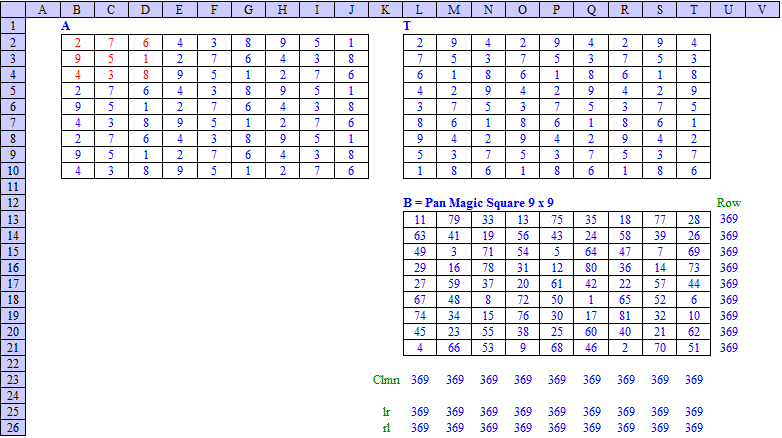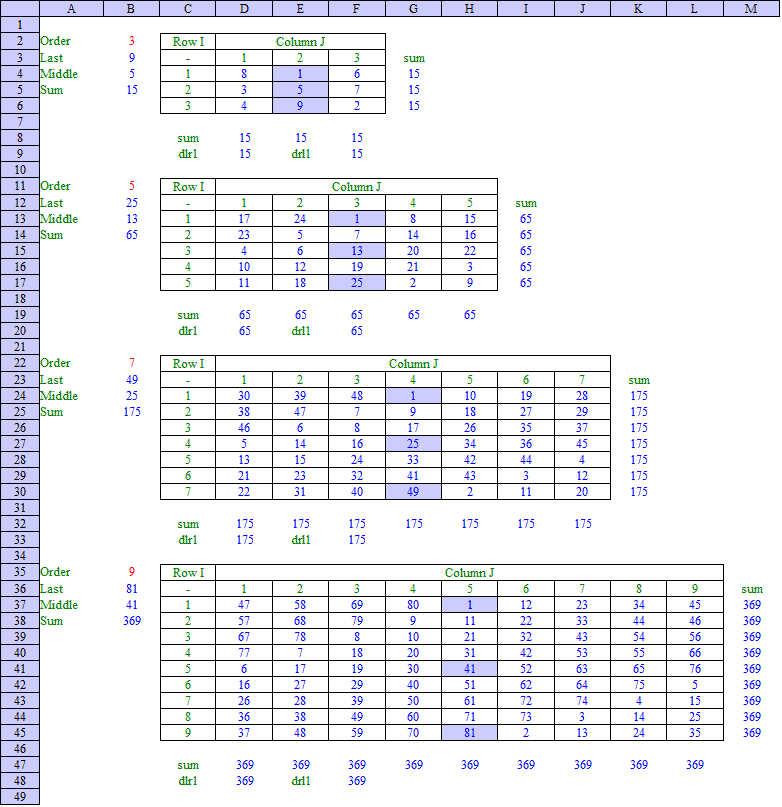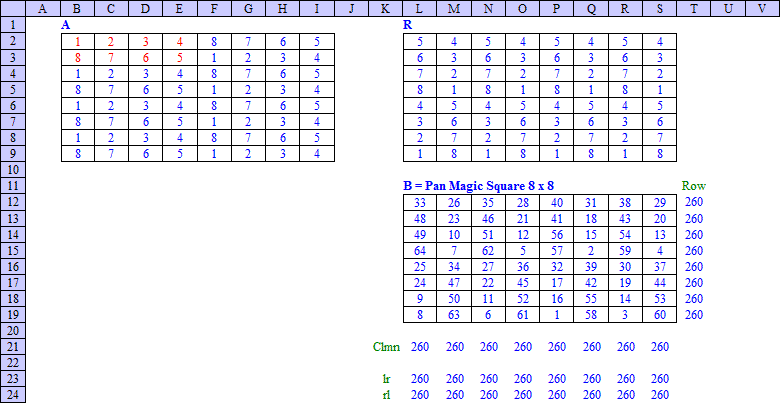Office Applications and Entertainment, Magic Squares | ||
|
|
Index | About the Author |
|
13.0 Construction of Single Magic Squares
In previous sections several procedures were developed for sequential generation of Classes of (Pan) Magic Squares, based on couples of linear equations describing subject Classes.
Pan Magic Squares (6n ± 1) × (6n ± 1)
As an example, subject method has been applied in an Excel spreadsheet for n = + 1, resulting in a Pan Magic Square of order 7, as shown below:
|
|
Magic Squares of odd order can be constructed based on the following formula's: |
Order
Last No.
Middle No
Sum
Ith row and Jth column No.
n
n2
(n2 +1)/2
n*(n2 +1)/2
n((I + J - 1 + (n - 1)/2) mod n) + ((I + 2J - 2) mod n) + 1
|
As an example, subject formula's have been applied for Magic Squares of order 3, 5, 7 and 9 in an Excel spreadsheet as shown below: |
|
Pan Magic Squares of order 6, 10, 14 ... (4n + 2) do not exist. For the 6th order this has been proven in section 6.1.
Pan Magic Squares, 4n × 4n
Pan Magic Squares of order 4, 8, 12 ... 4n can be constructed by means of following method:
As an example, subject method has been applied in an Excel spreadsheet for n = 2, resulting in a Pan Magic Square of order 8, as shown below: |
|
Like the Franklin Squares, every 2 × 2 square in the resulting 4n × 4n Pan Magic Square will have the same sum.
Some of the construction methods described above, or comparable methods, have been applied in following Interactive Solutions:
Detailed descriptions and instructions are included in the pages referred to above.
|
|
|
Index | About the Author |



